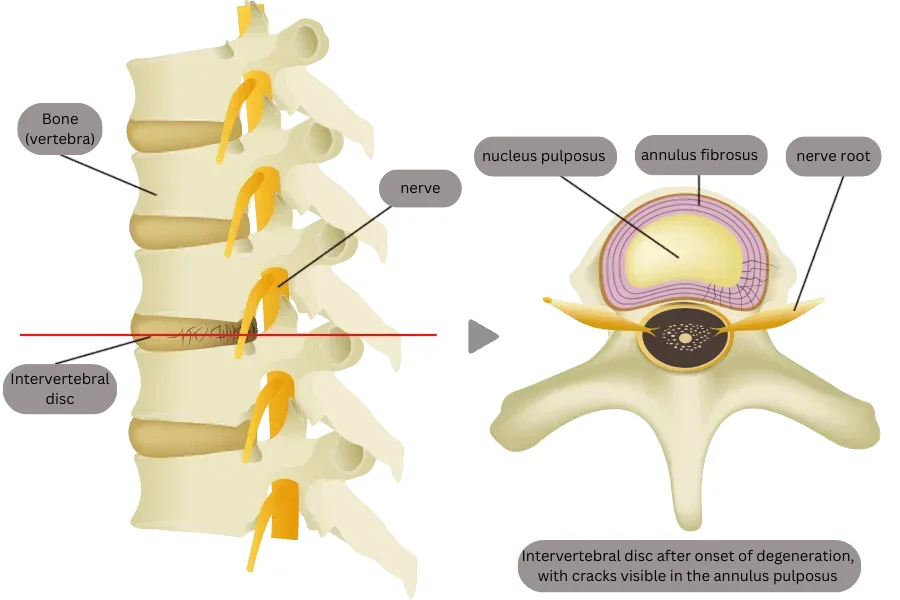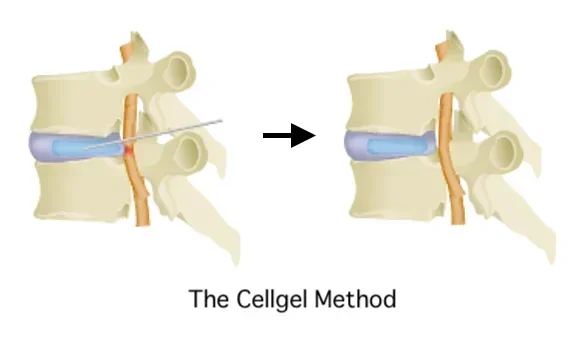Column 🛌How to Sleep Comfortably When You’ve Been Diagnosed with Disc Degeneration🛌
July 7, 2025
Intervertebral disc degeneration is one of the most common causes of disc herniation, spinal canal stenosis, and other vertebral disorders.
In this article, we will discuss how to sleep when you have disc degeneration.
Symptoms and causes of intervertebral disc degeneration
Intervertebral disc degeneration is a condition in which the tissue called the intervertebral disc, which acts as a cushion between the spine, is damaged or deformed due to aging or various other factors.
Advanced degeneration of the disc can lead to disc herniation, spinal canal stenosis, and other vertebral disorders.

Symptoms of disc degeneration
The main symptom of disc degeneration is back pain.
As the degeneration of the disc progresses, disc herniation occurs when the nucleus pulposus leaks out of the damaged disc, creating pressure on the nerves, leading to symptoms such as pain and numbness in the legs.
If degeneration of the disc progresses further, the disc loses its volume, causing the distance between the bones to decrease and the vertebrae to collide with each other, resulting in deformation. This deformation in turn causes inflammation of the bone surfaces and surrounding tissues, resulting in new pain in the lower back and buttocks, in addition to nerve-derived symptoms.
Causes of disc degeneration
Aging, excessive exercise, work environment, and heredity are believed to play a significant role in this type of disorder.
About 80% of the intervertebral disc is composed of water, which contributes to maintaining the disc’s elasticity and flexibility. As the disc ages, it loses its water content and elasticity. This condition makes them more susceptible to cracks as a result of stimulation.
The proper way to sleep when you have disc degeneration
For patients sleeping on their back
Place a cushion or a rolled-up towel under your knees and keep them lightly bent to reduce the strain on the lower back.
Since bending over increases the strain on the intervertebral discs, placing a towel between the lower back and the mattress is also effective in preventing the lower back from over arching.
Pillow height should also be adjusted to create a natural curve in the neck and lower back.

For patients sleeping on their side
Bending the knees lightly and placing a cushion between the knees will reduce the strain on the lower back.
Using a pillow can also be effective.

Sleeping positions that should be avoided
Sleeping on your stomach should be avoided because it places a greater strain on the intervertebral discs.
Also, sleeping with the painful side down may aggravate the pain by causing muscle tension and poor blood flow, and should be avoided.
Finding a fundamental treatment is also essential
Our clinics perform the Cellgel Method to teat disc degeneration.
The nucleus pulposus, which is the cushioning component of the intervertebral disc, leaks out little by little, causing the disc to gradually collapse. A collapsed disc can cause various types of disorders.
With the Cellgel Method, a drug is injected to fill the cracks in the disc, which then turns into a gel that repairs the cracks, thereby providing a fundamental treatment. It is characterized by the fact that the disc volume is not reduced and the drug remains in the disc as a gel-like implant after treatment, thus preserving the disc.

If you have ever been diagnosed with disc degeneration, please consider a consultation at one of our clinics.
Related Articles
How to Treat Chronic Low Back Pain: Find the Right Treatment for Your Condition.



